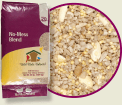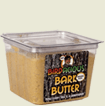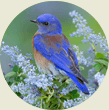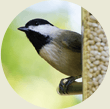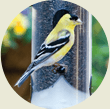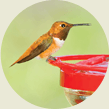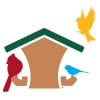Wild Birds Unlimited is proud to be the Champion for the NWF’s Certified Wildlife Habitat program, whose goal is to inspire everyone to create a haven for wildlife in their yard. Creating a wildlife habitat-friendly habitat to attract birds, butterflies, and other neighborhood wildlife is fun, rewarding, and makes a big difference. It’s easier than you might think. The habitat will need to include one or more of each of the following five elements; food, water, cover and a place to raise young and practice sustainability.
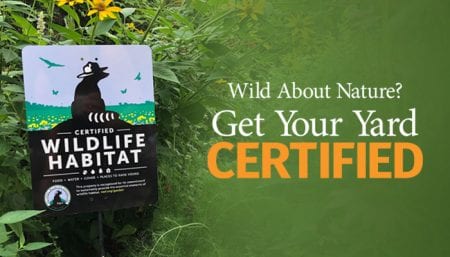
FOOD
The habitat will need to provide at least three sources of food for wildlife. Our first recommendation is bird feeders. Each needs to offer a different food type, i.e. nectar, suet, seed. Creating a bird feeding station with a variety of quality foods and various bird feeders will attract a greater number and variety of birds and bring you many hours of bird watching enjoyment. You can also offer at least one native plant food source that provides seeds, berries, nuts or nectar.
WATER
The habitat will need to provide one water feature. Water can attract as many birds to a yard or patio as a food source. Often, you will attract birds that do not normally visit your bird feeders. A water feature can be as simple as a water dish. We offer a variety of water sources and accessories from bird baths to drippers and misters.
COVER
The habitat will need to provide two sources of cover. You may offer nest boxes, roosting boxes and/or bat boxes. Birds need protective cover for times of rest, social interaction and as a retreat from foul weather and predators. Landscaping for the ideal wildlife habitat can include native plants ranging in size and density.
A PLACE TO RAISE YOUNG
The habitat will need to include two places for wildlife to raise their young. The same native plants that provide food and cover can provide safe areas for many species of wildlife to mate, build nests and raise their families. But, with the increased loss of natural habitat, many cavity nesting birds are having trouble finding homes. By providing bird houses, you will encourage birds to raise their young in your yard.
SUSTAINABILITY
The habitat steward will need to incorporate two sustainability practices. The idea of a flawless lawn may be a thing of the past. A few weeds and insects are a small price to pay for better health for birds, people and the environment. Try a few simple practices:
• soil and water conservation can include; mulching, composting, using a soaker hose or reducing
the amount of pavement and grass in your yard
• controlling invasive and exotic species by replacing them with native plants
• pledge to keep your cat indoors
• avoid pesticides and chemical use in your yard
Connect with your local WBU store to learn more about certifying your yard and creating a wildlife friendly habitat.

